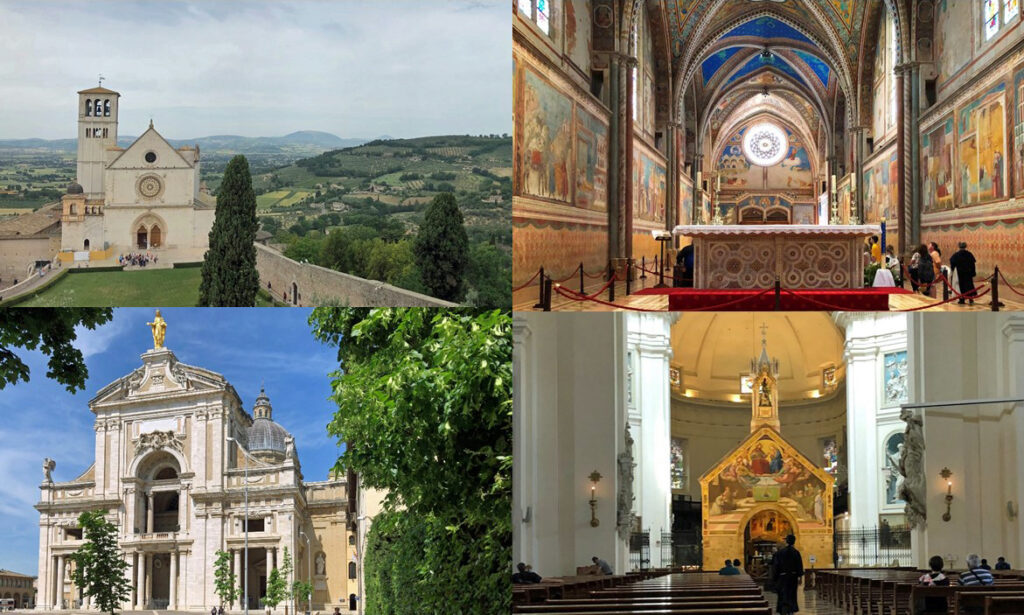Today, in our second visit to Assisi, we look at sites associated with St. Francis.
Francesco (“Francis”) di Pietro di Bernardone was born in Assisi in about 1181 A.D. to a prosperous Italian merchant and his wife, a French noblewoman. At about age 22, Francis abandoned his previously decadent life style and became a beggar, to the displeasure of his father, who reportedly locked him in a storeroom. After a vision, Francis began restoring churches around Assisi, including tiny Porziuncola where he lived in a nearby hut and renounced his family and its wealth. Francis adopted the dress of a poor priest and began attracting followers to Porziuncola with his idea of a simple life of poverty, following the example of Jesus. In 1209, Pope Innocent III recognized Francis and 11 followers, who had traveled to Rome to meet him, as the “Franciscan Order,” requiring members not to own property and to beg for food while preaching in the streets. While close to death, Francis asked to be returned to his hut near Porziuncola and to be buried outside the city among thieves, emulating Jesus.
Francis died in his hut on October 3, 1226. Less than two years later, Pope Gregory IX declared Francis a saint and began building the Basilica of St. Francis on an Assisi hillside, previously the burial ground of criminals, as the saint’s burial site. The magnificent basilica on the renamed “Hill of Paradise,” including an Upper Church, a Lower Church and the crypt of St. Francis, is the most important destination for the thousands of pilgrims who visit Assisi each year. Assisi’s 88,000-square-foot Basilica of St. Mary of the Angels, built between 1569 and 1679, is the seventh largest church in the world and includes within it the now lavishly decorated Porziuncola, the holiest place in the world for Franciscans.

Comments are closed.